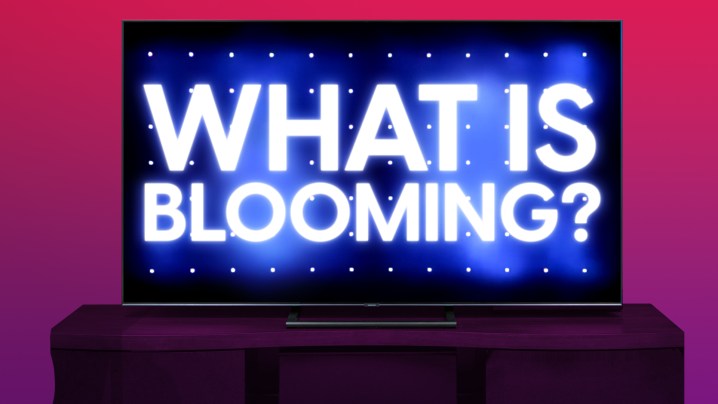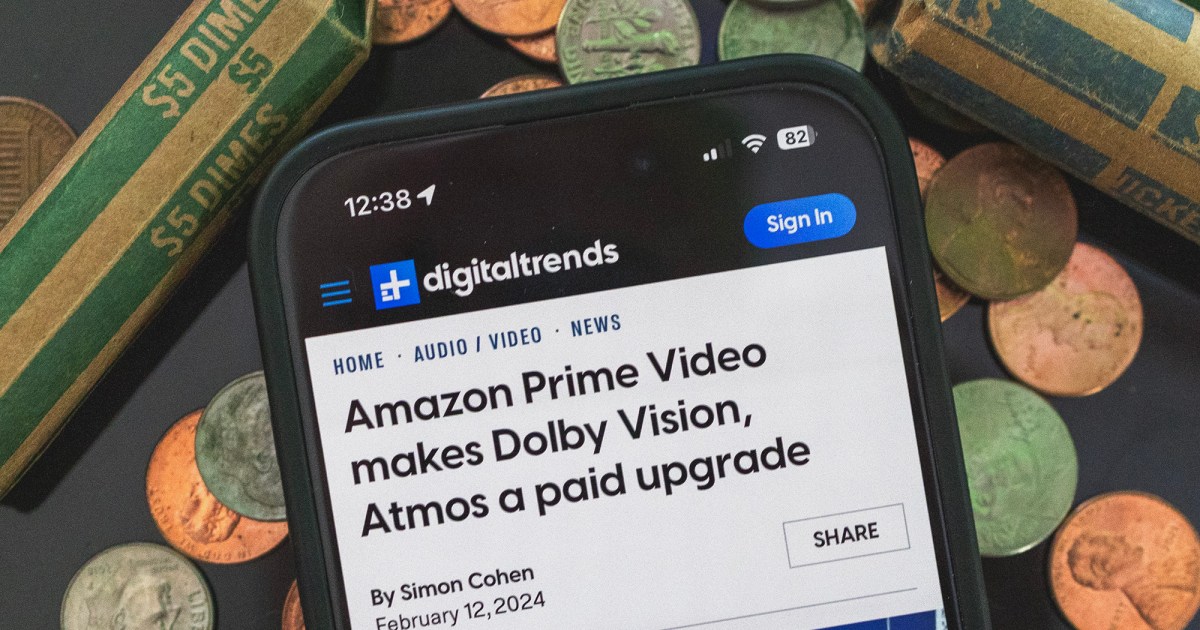

Ever heard somebody point out a difficulty with blooming on their TV, or a noticeable halo impact on their monitor, and puzzled what the heck they had been referring to? You’ve come to the proper place.
Blooming and halo impact are comparable, however barely totally different variations of the identical phenomenon: seen brightness from the backlight that seems in locations the place you wouldn’t anticipate it, like elements of the picture which are alleged to be black. It may well theoretically occur on virtually any TV or monitor that’s based mostly on LCD panel know-how.
Why does it occur and is there something you are able to do about it? Right here’s what you could know.
Blooming and halo impact: What are they and is there a distinction?

Within the early days of LCD shows, compact fluorescent lights (CFL) had been used because the backlight. They had been skinny and vibrant, however they lit your entire display screen with the identical stage of brightness, making it arduous to regulate distinction and black ranges.
When LCD TVs and displays transitioned from CFL backlights to LED know-how (changing into often called LED TVs), small rows of LEDs had been used on the sides (sometimes the highest and backside). LEDs offered extra management, however in some scenes, they forged seen vibrant patches close to the sides. It was particularly noticeable when viewing letterboxed content material (with horizontal black bars on the highest and backside of the display screen). The sting-based LEDs tended to clean out these black bars, an impact that turned often called blooming.

As LED backlight know-how advanced, the LEDs started to occupy your entire area behind the display screen — not simply the sides. This array of LEDs had been subdivided into zones, with every zone made up of a number of LEDs. This considerably elevated management over brightness and placement, and successfully eradicated blooming from the display screen’s edges.
Nevertheless, it launched a brand new drawback: Typically a person zone was bigger than the realm of the display screen that was supposed to be brightly lit — like a candle’s flame, when seen towards a darkish or black background. You’d usually anticipate the sting of the flame to be the place the brightness stops, however generally it continued outward, framing the flame in a gentle halo of extra mild — thus the time period.
Nowadays, the phrases blooming and halo impact are used interchangeably.
Do all TVs and displays expertise the halo impact?

No. The halo impact is exclusive to shows that use transmissive display screen know-how — in different phrases, brightness is created by an impartial backlight, which then passes by means of an LCD matrix and a coloration filter earlier than reaching your eyes. LCD TVs, LED TVs, and QLED TVs are all examples of TVs (and
Transmissive shows exert management over brightness by dimming the backlight and utilizing the LCD matrix to dam any remaining mild. Sadly, it’s not at all times completely efficient. As we mentioned above, if a backlight zone is simply too massive or poorly managed relative to the on-screen image, mild can and does leak by means of.
Emissive shows, like plasma, OLED, QD-OLED, and microLED, work otherwise. These applied sciences produce brightness on the pixel stage, with out the necessity for a separate backlight. As a result of these shows can at all times management precisely how a lot brightness exists, proper right down to the smallest attainable element, they by no means create a halo impact.
Do I would like to fret concerning the halo impact when shopping for a brand new TV or monitor?

Whilst lately as 2020, many transmissive-based TVs exhibited issues with blooming and halo impact, particularly on the lowest finish of the value spectrum. However there’s been a large bounce in backlight know-how since then.
Backlights now routinely encompass 1000’s of tiny mini-LEDs, organized in a whole bunch (and even 1000’s) of zones. The image-processing software program has additionally improved drastically, permitting TVs to match the picture on-screen with corresponding backlight zones with a excessive diploma of precision and sync.
This enchancment isn’t fairly as correct as you’ll get from emissive show TVs. However for most individuals, the variations are minor, and experiences of blooming or halo impact have largely disappeared amongst house owners of mid- to upper-range TV fashions.
Nonetheless, if you’d like absolute precision in brightness and distinction, with zero mild bleed, emissive show applied sciences stay the very best you may get.
Is there something I can do about blooming or halos if I discover them?
Sure, however it might require some trade-offs. Since blooming/halo is produced when an LCD matrix is unable to dam mild coming from the show’s backlight, lowering the backlight’s most brightness may also help. The much less mild that the backlight produces, the more practical the LCD’s light-blocking will get.
Examine your TV or monitor’s settings. There’s typically a low, medium, or excessive backlight brightness adjustment. Strive transferring it down one stage to see if this improves your notion of sunshine bleed.
The draw back of doing that is that the show can have a more durable time offering good distinction in well-lit rooms. It’s possible you’ll must dim you room’s lighting or cowl home windows to compensate.
Wait, I can see halos on my OLED show. Isn’t that unattainable?

A real halo impact is brought on by mild bleed (which doesn’t occur on OLED shows), however that doesn’t imply you’ll by no means see issues that appear like the halo impact.
Extremely compressed video sometimes produces artifacts — elements of the picture which are blurry as an alternative of crisp, or missing in positive element. Artifacts may produce a smearing or “banding” of the picture, the place cleanly outlined edges of objects turn into wider.
Within the earlier candle flame instance, video compression might trigger the flame’s brightness to increase outward into the inky blackness behind it, typically with a noticeable, blocky halo.
If this occurs usually, you’ll have a bandwidth drawback (your web connection isn’t quick sufficient for the fabric you’re viewing) or your streaming service could be experiencing unusually excessive demand. Most streaming companies like Netflix robotically cut back the quantity of knowledge wanted by growing video compression when one or each of those conditions happen.
It’s extremely unlikely that you will notice compression-based halos when watching a film from a Blu-ray participant, or whereas enjoying a online game that doesn’t require an web connection.
Editors’ Suggestions
Supply Hyperlink : https://kepala.uk/


